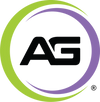Horticulture Lighting Terms
When searching for the best grow lighting solutions it is important to know that not all general lighting specifications are relevant when evaluating a horticultural lamp or luminaire. Lumens, lux and candela are suitable metrics for discerning light efficiency and intensity in commercial and residential lighting but should not be focused on when judging horticultural lighting. In order to make better-informed decisions when choosing lighting for horticulture specific applications, familiarize yourself with the terms PAR, PBAR, PPF, PPE, PPFD and DLI. Active Grow is here to help you select the right equipment for your grow. Please contact us at info@activegrowled.com with any questions. Now get growing!
PAR refers to Photosynthetic Active Radiation and designates the spectral range from 400–700 nm. The photons in the PAR range affect other horticulture lighting metrics such as PPF, PPE, PPFD and DLI.


PBAR refers to Plant Biologically Active Radiation and designates the spectral range from 280–800 nm. According to the American Society of Agricultural and Biological Engineering (ASABE), PBAR covers a more substantial range of light that affects plant biology. The PBAR measurement includes the PAR band from 400–700 nm as well as the ultraviolet radiation band of 280–400 nm and the far-red radiation band of 700–800 nm.
Active Grow reports both the PAR and PBAR values for all product specifications as the 280-800 nm range is becoming more widely recognized and incorporated into industry lighting standards.
PPF refers to Photosynthetic Photon Flux or a light source’s total number of photons emitted measured in micromoles per second (µmol/s). PPF traditionally only measures the number of photons in the PAR 400-700 nm range and is currently the standard measure for determining the efficacy of horticultural lighting products. Active Grow provides PPF data for both the PAR 400-700 nm and PBAR 280-800 nm ranges.


PPE refers to Photosynthetic Photon Efficacy and measures a light source’s efficiency at converting electrical energy into light in the PAR range as expressed in micromoles per Joule (µmol/J). To calculate the efficacy of a light source, divide the PPF by the Power (Ex. 50 µmol/s / 25W = 2.0 µmol/J. Active Grow provides PPE data for both the PAR 400-700 nm and PBAR 280-800 nm ranges.
PPFD refers to Photosynthetic Photon Flux Density or the amount of photons in the PAR or PBAR range that reach a target point each second as expressed in micromoles per square meter per second (µmol/m2/s). In horticulture, PPFD maps generally include multiple target points evenly spread out covering a defined growing area (Ex. A 4′x4′ growing area with measurements taken at 6″ increments). Each target point measurement represents the amount of photons falling on the plant canopy from a given height at that specific location each second.
Active Grow provides PPFD data for many of its fixtures for different mounting heights and environments (open floor vs reflective sides). All Active Grow PPFD data uses the PBAR range.


DLI refers to Daily Light Integral or the total amount of photons in the PAR range that lands on a target point over the course of 24 hours as expressed in moles per square meter per day. Different types of plants have different DLI requirements, so this metric is useful in determining the appropriate light levels required for specific horticulture applications.
Try out Active Grow's DLI Calculator.
The Emerson Effect is the increase in the rate of photosynthesis after chloroplasts are exposed to light of wavelengths 660-680 nm (red wavelengths) and 680-730 nm (far-red wavelengths) simultaneously. This combination of red and far-red wavelengths increases photosynthesis rates by up to 15%, resulting in faster grow cycles, enhanced flavonoid content and a higher percentage of trichomes in cannabis. Recent studies have shown the Emerson Effect to improve the growth rates of vegetables, flowers, fruits and other plants species.
For more information watch the video “Far-red: The Forgotten Photons” from Dr. Bruce Bugbee, the Director of the Crop Physiology Lab at Utah State University.






